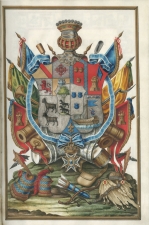Colonel Bernardo de Gálvez, commander of the Spanish Army’s Fixed Louisiana Infantry Regiment, arrived in New Orleans in December 1776. He almost immediately took office as acting governor of the Louisiana colony on January 1, 1777, upon the departure of Luís de Unzaga. Gálvez was then thirty years old. Despite his youth and inexperience, he effectively dealt with various civil, military, and diplomatic challenges in the Mississippi Valley and northern Gulf Coast, not the least of which was the recently declared war between Great Britain and the colonies that would eventually become the United States.
In 1779, following Spain’s declaration of war on Great Britain, Gálvez led a small force that successfully captured Fort Bute on the Mississippi and Iberville Rivers, as well as British outposts at Baton Rouge and Natchez, effectively ending British control of the lower Mississippi Valley. Gálvez’s subsequent victories in Mobile (1780) and Pensacola (1781) restored Spanish rule in West Florida, and eliminated a British threat to the American Revolution.
Charles III elevated Gálvez to the Spanish nobility and promoted him to the post of Viceroy of New Spain formerly held by his father. For his support of the American cause, Gálvez received the official thanks of the Continental Congress. He remained popular until his death in 1786 at the age of 40.
This beautiful document from a grateful king extols Gálvez’s virtues as a soldier and as a man, and declares him to be the Viscount of Galveston and Count of Gálvez. A detail in Gálvez’s new coat of arms immortalizes Gálvez’s brave entry into Pensacola Bay. The banner on his sailing brig reads “Yo Solo” (I alone), though he had not actually been alone aboard his flagship.

